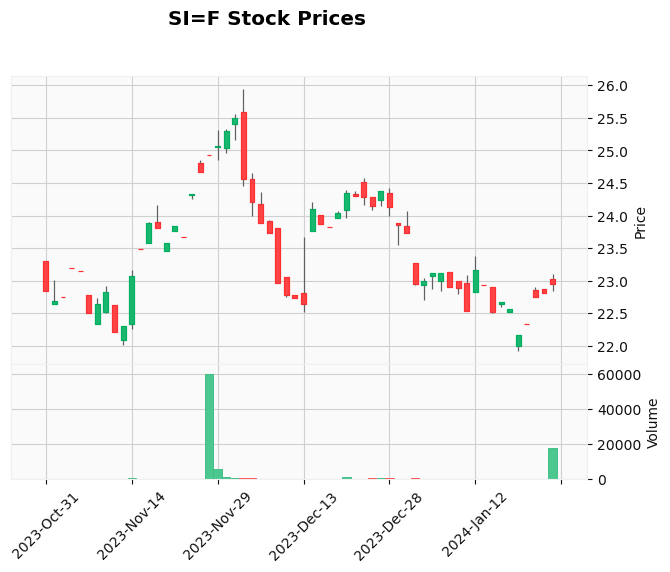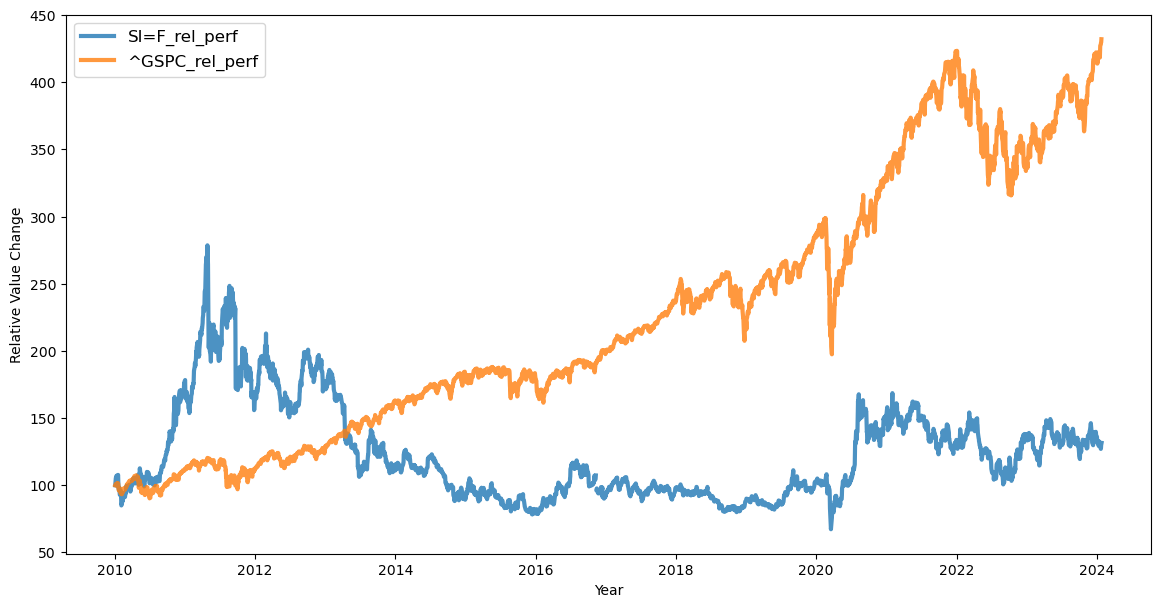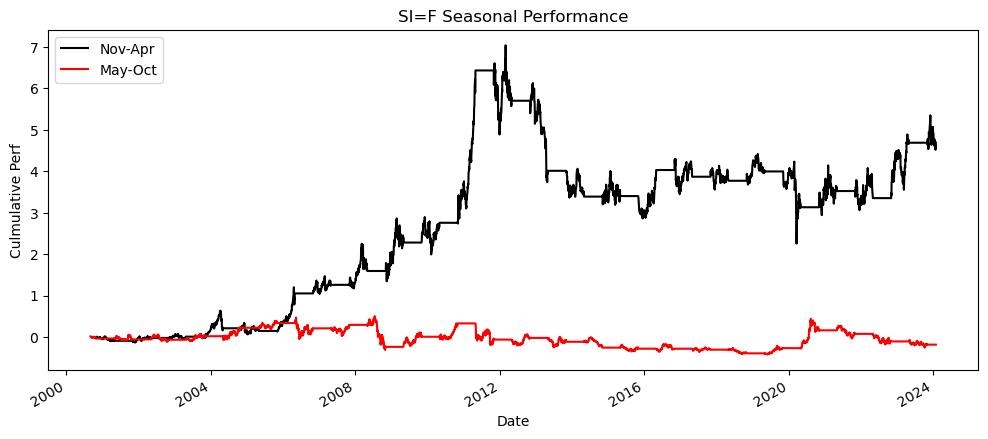Stacking Silver in a Rising Stock Market: A Wise Move?
Silver Coin Collecting Markets EconomyIn an era where the stock market is witnessing a notable upswing, investors and financial enthusiasts are faced with new challenges and opportunities. This evolving landscape prompts a pertinent question: is diversifying into alternative investments like silver coins and bullion still a wise decision?
In previous articles, such as “Silver Prices Forecast and How to Get Started Stacking Silver for Fun and Profit”, we explored the dynamics of silver as an investment and its potential for generating profit. Now, we delve deeper into the relevance of silver stacking in the context of a burgeoning stock market. As we examine this topic, we draw upon insights and trends from these past discussions, providing a comprehensive view for both seasoned investors and enthusiastic coin collectors.
Overview of Silver Stacking
Silver stacking, a term familiar to many yet intriguing to newcomers, refers to the practice of accumulating silver coins and bullion as a form of investment or collection. This activity transcends mere fascination with precious metals; it’s an investment strategy with deep historical roots. Silver, known for its intrinsic value, has been a symbol of wealth and a medium of exchange for centuries. Its allure lies not only in its aesthetic appeal but also in its enduring value, especially in times of economic uncertainty.
The concept of stacking silver coins and bullion, as detailed in the article “Silver Prices Forecast and How to Get Started Stacking Silver for Fun and Profit”, offers a tangible asset that stands apart from digital or paper investments. Unlike stocks or bonds, silver possesses a physical form, providing a sense of security and tangibility that’s appealing to many. Its historical stability, as seen in various economic climates, adds a layer of trust and reliability in the eyes of investors and collectors.

For those new to this realm, understanding the nuances of silver stacking is crucial. It involves knowing the types of silver to invest in, such as coins, bars, or rounds, and recognizing the importance of purity and weight. The practice is not just about accumulation; it’s about building a portfolio that can withstand the test of time and economic fluctuations.
This section provides a foundational understanding of silver stacking, setting the stage for a deeper exploration of its role in a rising stock market.
Silver vs. Stocks in a Rising Market
The relationship between silver and the stock market is complex and multifaceted. While stocks are often the go-to choice in a bullish market, silver holds its ground as a distinct asset class. Historically, silver prices have shown a degree of independence from stock market trends. This unique characteristic makes silver an intriguing option for diversification.
One key aspect to consider is the role of silver as a hedge. In times of stock market volatility or economic uncertainty, investors frequently turn to silver and other precious metals. Silver’s price, as detailed in the Silver Prices Forecast, can be influenced by factors distinct from those impacting the stock market, such as industrial demand, mining supply, and global economic conditions. These factors often lead to a negative correlation with stock markets, implying that when stocks go down, silver prices might hold steady or even increase, offering a balancing effect in a diversified portfolio.

However, it’s important to note that silver does not always move in opposition to stocks. There are phases when both markets can rise simultaneously, driven by broader economic growth and investor sentiment. This phenomenon has been evident in recent years, where we have seen both stocks and silver prices thrive in a generally positive economic environment.
The decision to invest in silver in a rising stock market, therefore, requires a nuanced understanding of these dynamics. Investors should consider not just the current state of the stock market, but also the broader economic indicators, geopolitical scenarios, and silver’s historical performance in similar conditions.
Pros and Cons of Silver Stacking in the Current Economy
Pros of Silver Stacking Hedge Against Inflation: One of the most significant advantages of stacking silver in the current economic climate is its potential as a hedge against inflation. With rising prices and the devaluation of paper currency, silver can maintain its purchasing power over time. Its historical performance in periods of high inflation indicates that it can serve as a protective buffer, preserving the value of an investor’s portfolio. This characteristic is particularly appealing in an environment where traditional investments might lose value due to inflationary pressures.
Cons of Silver Stacking Liquidity Challenges: While silver has its merits, it also comes with certain drawbacks, particularly concerning liquidity. Converting silver into cash isn’t as straightforward as selling stocks or bonds. This process requires finding a reputable dealer who is willing to buy the silver at a fair market price. The necessity to physically transport the silver to a dealer, coupled with the potential for fluctuating buyback prices, can make the conversion process more cumbersome compared to more liquid assets. This factor is a crucial consideration for investors who might need quick access to cash or who prefer investments with higher liquidity.
Storage and Insurance Costs: Additionally, owning physical silver entails considerations for secure storage and insurance, adding to the overall cost of investment. Unlike digital assets or stocks, which are stored electronically, silver requires physical space, which might involve safety deposit boxes or home safes, and these come with their own costs and risks.
In weighing these pros and cons, investors and collectors must align their strategies with their long-term financial goals and risk tolerance. Silver stacking, while offering certain benefits in a diversified portfolio, requires careful consideration of these practical aspects.
Strategic Considerations for Investors and Collectors
Investing in silver, whether as a collector or an investor, requires a strategic approach, especially in a rising stock market. The key is to find a balance that aligns with your financial goals and risk tolerance.
Balancing a Portfolio: For investors, silver should be a part of a diversified portfolio. While stocks may represent growth potential, silver can add stability and act as a hedge against market volatility. The proportion of silver in your portfolio can vary based on your investment horizon and risk appetite. A conservative approach might involve a smaller percentage of silver, while a more aggressive strategy could increase this allocation, especially in times of economic uncertainty.
Timing and Allocation: The timing of your silver purchases can significantly impact your investment outcome. Keeping abreast of market trends, economic indicators, and geopolitical events, as discussed in weekly gold and silver forecasts, can inform your buying decisions. Regular, disciplined purchases, known as dollar-cost averaging, can help mitigate the risk of market timing.

Note: There’s a strong seasonality component for Silver!
Long-Term Strategies: Silver stacking is typically considered a long-term investment. Fluctuations in silver prices can be significant in the short term, but over the long haul, silver has historically maintained its value. Investors should be prepared for a holding period that spans several years to realize potential gains fully.
Tips for Coin Collectors: For collectors, the value of silver coins can extend beyond the metal content. Numismatic value, rarity, historical significance, and condition play crucial roles. Collectors should focus on acquiring pieces that have both metal value and collectible appeal, which can offer an added layer of investment potential. I also post weekly silver price forecasts to help you figure out when to buy.
End Notes
Stacking silver in a rising stock market presents a unique set of opportunities and challenges. As an investment, silver offers a hedge against inflation and a diversification option that can balance a portfolio exposed to stock market fluctuations. However, the practical aspects of liquidity, storage, and insurance are important considerations that require careful planning.
For both investors and coin collectors, the key to success in silver stacking lies in a strategic approach: understanding market trends, making informed decisions about timing and allocation, and committing to a long-term investment horizon. Additionally, the importance of purchasing from reputable coin or bullion dealers cannot be overstated. This ensures the authenticity and value of your silver investments, safeguarding your financial interests.
As the economic landscape evolves, staying informed and adaptable is crucial. Regularly referring to reliable sources like weekly gold and silver forecasts and historical analysis can provide valuable insights for making educated decisions in your silver stacking journey.
Disclosure: Long anything Silver
Buying Gold and Silver Bullion and Coins
Sometimes it's hard to find a good coin dealer. In those cases I like to check out what's available on Amazon. Here are some options to buying silver bullion and coins from there.